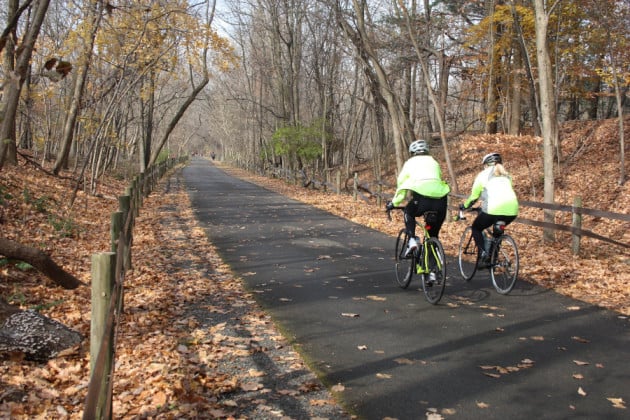Regional & Local Trails Provide a Step Toward a More Connected Upper Merion

The recent William Penn Foundation grant awarded to King of Prussia District marks an exciting milestone for Upper Merion and its ongoing vision of a regional multimodal trail network.
For decades, the Township has recognized the importance of pedestrian and bicycle infrastructure as a way to connect neighborhoods, commercial districts and business parks. Upper Merion’s Vision 2020 Plan laid the groundwork for a more walkable community, complete with bike trails designed to span the Township. The 2019 Parks & Recreation Plan reinforced that vision, emphasizing that trails and pathways are among the most essential amenities for park users. That same report revealed that 75% of park visitors currently drive to these spaces, underscoring the need for safer and more accessible pedestrian routes. The upcoming update to the Township’s Comprehensive Plan is expected to further strengthen these goals and move them from blueprint to reality.
The Circuit Trail Coalition, a partnership of organizations advocating for a multi-use trail network across nine counties in Pennsylvania and New Jersey, has identified the Gulph Road Connector in King of Prussia as the region’s top-priority trail segment. This project is more than a path to parks and recreation areas like Valley Forge National Historical Park; it’s a vital link to opportunity. The Coalition’s 2022 Gap Analysis named the Gulph Road Connector the number one priority for improving access to employment across the area, showing how trails can serve both leisure and livelihood.
Multimodal trails also provide a sustainable alternative to congested highways. The Gulph Road Connector, which will link the Schuylkill River Trail to the Chester Valley Trail, offers a convenient, cost-effective and healthy commuting option. As part of the 400-plus-mile Circuit Trail Network, these connections will give cyclists and pedestrians a safer, more enjoyable experience than navigating busy local roads. Once complete, riders will be able to travel roughly seven miles in about thirty minutes, connecting Phoenixville, Collegeville, Malvern, Norristown and Conshohocken through dedicated multimodal paths that span eight municipalities.
The expansion of the local trail network and public spaces like Recharge Park (currently under construction in Moore Park) is also making it easier for cyclists of all skill levels to explore Upper Merion and beyond. From beginners to seasoned riders, everyone will have access to dedicated trails and low-traffic routes designed for comfort and safety. The Delaware Valley Regional Planning Commission’s web tool highlights “low traffic stress islands,” areas where cyclists can ride with minimal concern about vehicle traffic. These zones will grow as new multimodal pathways are added, expanding the reach of the bike network south of the Chester Valley Trail and connecting even more neighborhoods and destinations.
Beyond the physical infrastructure, regional and local trail networks bring intangible yet powerful benefits. They encourage active lifestyles, provide affordable transportation and ease congestion on local roads, all while improving air quality and the environment. More importantly, they create shared spaces where residents, visitors and employees can connect with one another and with their surroundings. These daily interactions, whether a friendly wave on the trail or a spontaneous conversation at a park, foster a sense of community that makes Upper Merion a more vibrant place to live, work and visit.
